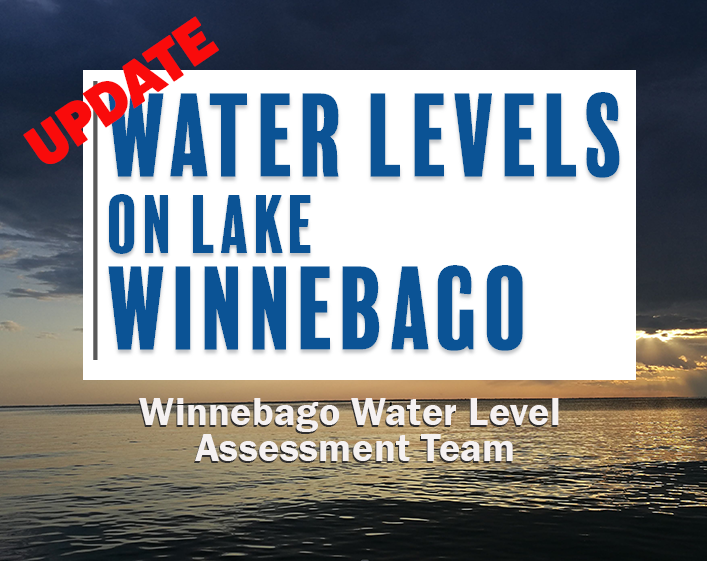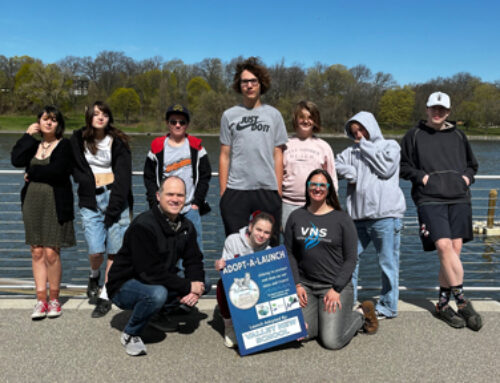The Winnebago Water Level Assessment Team provides a collaborative opportunity for stakeholder representatives and experts to develop a realistic and achievable water level strategy and related goals that reasonably balance the top priorities of multiple system users and the health of the lakes.
The Team held a conference call on January 8th, 2020 to discuss the winter drawdown timing and target level. At the end of the conference call, the Team approved the following recommendation:
“Based on basin conditions and in consideration of additional precipitation in the forecast, the WWLAT recommends a drawdown target of 1.4 ft. be met by February 15th, 2020 to provide storage capacity in Lake Winnebago in preparation for high inflows during spring melt. We understand that this would require a decrease in average lake level of 0.025 ft. per day and an estimated discharge of approximately 2700 cfs above inflow per day. As we get closer to February 15th, if conditions indicate that more storage capacity may be necessary to prevent the lake from exceeding the target operating band during spring refill, we recommend the Army Corps lower the lake to 1.2 ft. by March 1st (as needed, based on their discretion). This would hopefully reduce the need for high discharge (beyond 11,000 cfs) and prevent damage to downstream properties caused by extreme conditions.”
A letter with the recommendations was emailed to the Army Corps on January 10th, 2020 in advance of the Army Corps public meeting scheduled for Monday, January 13th, 2020.
CLICK HERE to view the letter that was submitted to the Army Corps with the WWLAT 2020 winter drawdown recommendations.
Information about the Army Corps public meeting can be found on the Army Corps website: https://www.lre.usace.army.mil/Missions/Great-Lakes-Information/
Direct link to meeting notice: CLICK HERE
Interested in being part of the Winnebago Water Level Assessment Team? Please contact Korin Doering at (920)851-0948 or korin@fwwa.org. We are currently in need of people who can represent water-based businesses and boating recreation.
What is the Winnebago Water Level Assessment Team?
In 2018, through efforts to develop an updated lake management plan, local stakeholders recognized the need for a collaborative and constructive approach to providing input to the Army Corps to support their adaptive decision making efforts. Whether upstream or downstream of the dams at the outlet of Lake Winnebago, each user group has a stake in the quantity and quality of the water resources in the Winnebago System. However, one group’s ideal target water level, rate of outflow from Winnebago, or annual water level strategy can be in conflict with another group’s desires or needs. For example, recreational boaters often prefer higher water levels in early spring so that their boats can access larger areas of the shallow lake system earlier in the open water season. While recreation is important for the region, high water levels in early spring can cause serious damage to sensitive aquatic vegetation communities leading to loss of habitat, shoreline erosion, reduced sediment stability, and a reduction in water quality.
It’s important that all stakeholders have the opportunity to have their voices heard and input taken into consideration. Throughout the year, the Army Corps of Engineers holds public meetings to provide people an opportunity to comment on their water level strategy. While a great opportunity to get stakeholders to participate in the conversation, to truly work through the issues and find compromise there needs to be a complementary initiative that enables stakeholders to constructively work through the conflicts as a team outside of the Army Corps public meetings. This would allow for more effective stakeholder engagement in the adaptive management process and empower stakeholders to work together for the benefit of the system.
To satisfy this, the Winnebago Water Level Assessment Team was formed. The team is made up of representatives from stakeholder groups who are impacted by water level management decisions as well as experts who can speak to water level management, water quality, habitat, fisheries, erosion, flooding, etc. This will be an ongoing group that will work together each year to agree on a realistic and achievable water level strategy that reasonably balances the top priorities of multiple system users and the health of the lakes. The group will also review results from the previous year and correct/adjust the strategy when issues arise. Results from Team discussions will be shared with the Army Corps as stakeholder input (the Army Corps makes water level management decisions – this group will be providing input to help support their decision making process).
To view other updates from the WWLAT, CLICK HERE.
To learn more about lake management planning, CLICK HERE.
Interested in receiving monthly project updates? Sign up here:







